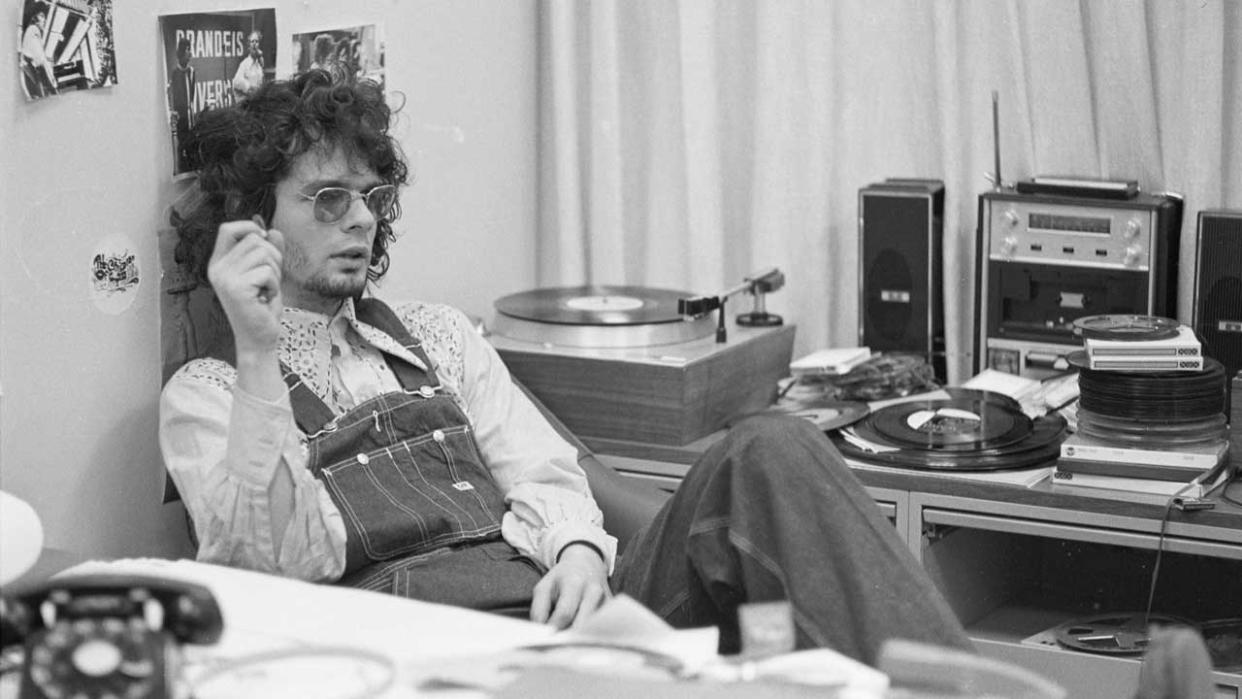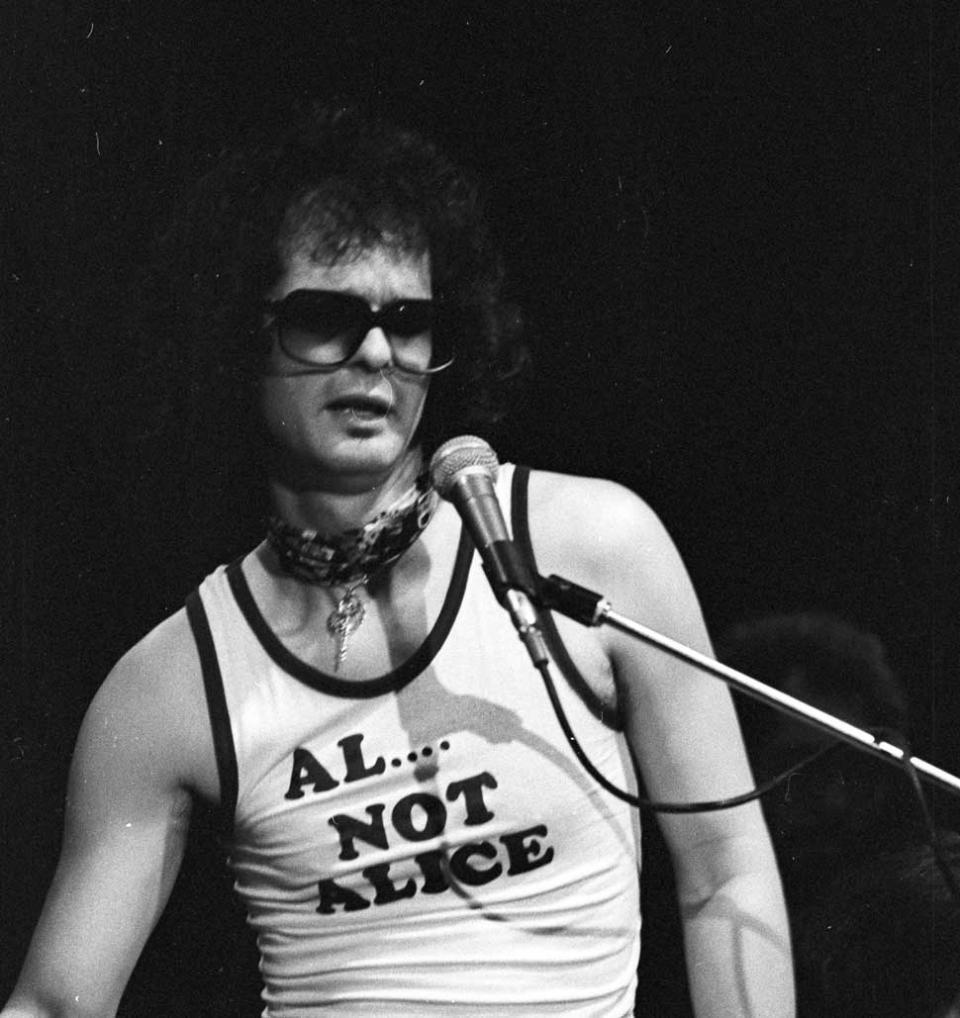Al Kooper: My stories of the Rolling Stones, The Who, Bob Dylan, Joe Walsh and more

During a career that’s lasted for 50 years, Al Kooper has participated in many of rock’s most glorious milestones. As well as playing the keyboard parts on Bob Dylan’s Like A Rolling Stone and the Rolling Stones’ You Can’t Always Get What You Want, the ubiquitous New Yorker also took part in Jimi Hendrix’s Electric Ladyland sessions.
Lynyrd Skynyrd were just a bar band until Kooper, the founding member of Blood Sweat & Tears, discovered them. Simon & Garfunkel, Alice Cooper, Tom Petty, Stephen Stills – Kooper has known more stars than Patrick Moore.

Bob Dylan
With Bob you don’t know which Bob you’ll meet, but I think that’s interesting. I owe him a lot. I’d started out in the business at the age of 14. Prior to playing on [Dylan’s] Highway 61 album I wrote a No.1 song in America – This Diamond Ring, by Gary Lewis And The Playboys – which couldn’t be further from what Bob Dylan did. So I didn’t say anything at all to him for a couple of years, until my hip card had been punched. We built up a nice friendship. He regularly came to my house when I lived in Nashville. We haven’t spoken in a while. I think he’s going through one of ‘those’ periods, but that’s okay.
George Harrison
I worked on George’s Somewhere In England album, in 1981. Sense of humour-wise we really connected. I was living in Hollywood and my doorbell rang at 11 o’clock at night. And it was George, this Beatle, coming completely unannounced to a house that he’d never even visited before. That’s the kind of stuff he did.
John Lennon
I knew John during the time he spent with Harry Nilsson [in the mid-70s], when he was exiled in LA. He was witty and lovely, especially if you saw him in daylight hours. During the evening he tended to be tipsy. I knew him in both conditions. When I was doing Lynyrd Skynyrd’s second album, the Record Plant studio became our clubhouse. One day John walked into the control room. After he’d gone, Skynyrd asked: “Was that John Lennon?” When I replied that it was, they sighed deeply and said: “Uh, we’re gonna have to take a break.” And they did.
Paul McCartney
At a session for Kenney Jones, the Faces drummer, I was surprised to see McCartney playing bass. He was with his eventual wife, Linda. Part of my job was teaching Linda something to play on another keyboard so that she could participate. That was really weird, but I did it anyway. On a break, McCartney sat at the piano and played Georgia On My Mind, which was fabulous.
Ringo Starr
I loved Ringo’s drumming. I played on some tracks of his that George Harrison was producing. I still have a wonderful Polaroid photo that Ringo took of he and I together – it’s in my book Backstage Passes & Backstabbing Bastards: Memoirs Of A Rock ‘N’ Roll Survivor, which will soon be in print again.
Jimi Hendrix
I saw him at the Café Wah on what was probably the night he was grabbed by Chas Chandler and taken to England. I was the stage manager at the Monterey Pop Festival in 1967, and Jimi asked if I would sit in with him on Like A Rolling Stone. I had to turn him down because I was working. It was a mistake. But he lived a block from me when he moved to New York. We jammed together a lot and became very good friends indeed. Jimi was very shy and quiet, a sweetheart, the complete opposite of the ostentatious way he is perceived.
Lynyrd Skynyrd
I was producing an album in Atlanta, Georgia. In the evenings I’d frequent a club. This band with an unpronounceable name was playing there for six nights, two or three sets a night. By the third night, I sat in on guitar. By the fifth night I ended up at a party with a couple of the guys and discussed signing them to a production deal.
They were so good that I started my own label, Sounds Of The South, and we cut the first album in two weeks. Sure, Ronnie Van Zant was feisty, but he was one of the best bandleaders I ever met. He ruled Skynyrd with an iron hand. If anybody went up against him, they’d get punched out. They rehearsed harder than any band I’ve seen; all the guitar solos were written in advance.
The Who
I played on Mary Ann With The Shaky Hand and Rael, both from The Who Sell Out. [Keith] Moon was the lunatic that legend suggests. He once invited the writer Terry Southern and myself to his home in LA to watch the movie Night Of The Living Dead. It was the days before video, and a projector and screen were set up. In the middle of the film, Keith announced he was going out to buy cigarettes and beer. But he didn’t come back, leaving Terry and I sitting there with his girlfriend.
Alice Cooper
I played on his 1977 album Lace And Whiskey. Alice and I used to live in Coldwater Canyon in LA. Because our names are similar we’d sometimes get each other’s mail. We had shirts made; mine said ‘Al not Alice’ and his said ‘Alice not Al’. We were both going out with dancers, but Alice actually stayed with his and married her.

John Belushi
I met him at a Blues Brothers show. Dan Ayckroyd and John were fans of mine. After I wrote a story on Steve Martin for Crawdaddy magazine, Steve came to my house with Belushi to do some photos. I laughed so hard at Belushi’s anecdotes, my ribs hurt for a week afterwards.
Brian Wilson
Pet Sounds is my favourite album of all time. A friend took me to Brian’s house in 1966, two weeks before Pet Sounds came out. Brian played me the album – twice, because it was a lot to take in. At the time, I thought there was a lot of ego coming from his side. Now I can look back and say maybe I misunderstood that. But I’m 64, and how old was he?
Harry Nilsson
I wasn’t around for those Hollywood Vampires nights at the Rainbow Bar & Grill, though I had my share of times in that place. Harry’s capacity for alcohol was considerable, though probably not as impressive as Lucinda Williams, who I’ve seen drink many men under the table.
The Zombies
I don’t know them too well as people, but on my first day working for CBS Records I had to stand up and tell label boss Clive Davis he was making a mistake in not releasing their album Odessey And Oracle [1968] in America. Clive listened, but the wrong single was put out. I had to complain again before Time Of The Season became huge. They still tell that story at every gig.
The Rolling Stones
After producing several albums in succession I came to England for a vacation in what I thought was secrecy. But the Stones tried to book me. I told them I wouldn’t do it; I just wanted to go shopping for records and clothes. Then I bumped into Brian Jones and he says: “Al, we’re so looking forward to the session with you.”
So I told myself I’d go, and if it wasn’t fun then I’d just get sick and leave. You Can’t Always Get What You Want was done on the first night. It was tremendous. But Jimmy Miller was busy rolling the joints and didn’t seem to do much in terms of producing. Mick Jagger was the real producer of that song.
The Tubes
Their self-titled debut from 1975 is probably the best-sounding record I ever made. I wanted a sound like a Broadway Original Cast album, with strings and horns but retaining a rock’n’roll feel. With seven members of the band all saying: “Make me louder!”I had to keep throwing them out of the studio as we mixed the record.
Joe Walsh
We’ve been friends since he was in the James Gang. I toured with Joe in 1991, playing guitar and keyboards. It was a good experience, but Joe was quite high at the time. Having gone through that myself I thought it was a little sad. But he got straightened out eventually and is now clean as a whistle.
Stephen King
He’s a prime example of a nerd. I was a huge fan, so it was great to meet him when we played together in a band of authors called the Rock Bottom Rainmakers in 1992. Matt Groening, the creator of The Simpsons, was also a part of that. Stephen played guitar and was… kinda average. But he was very passionate about music.
